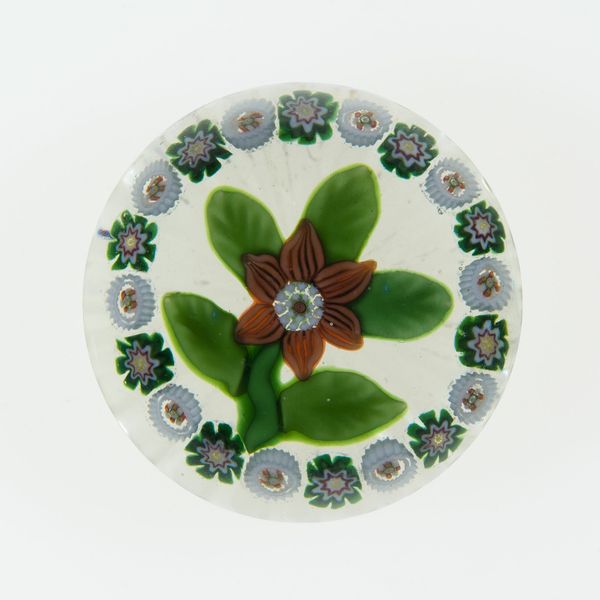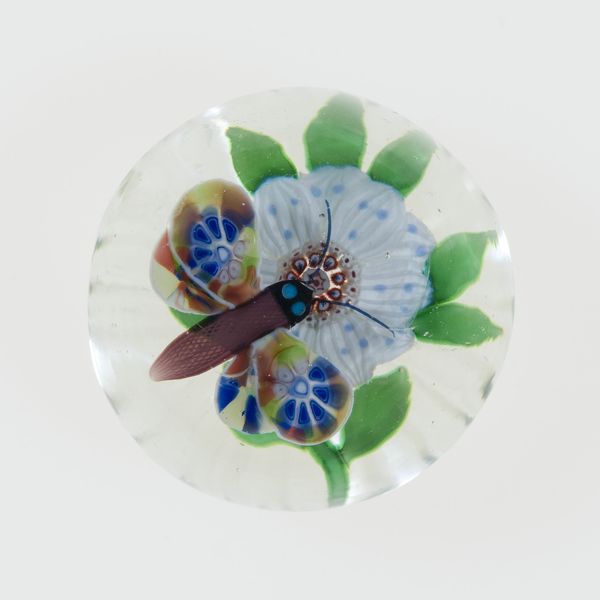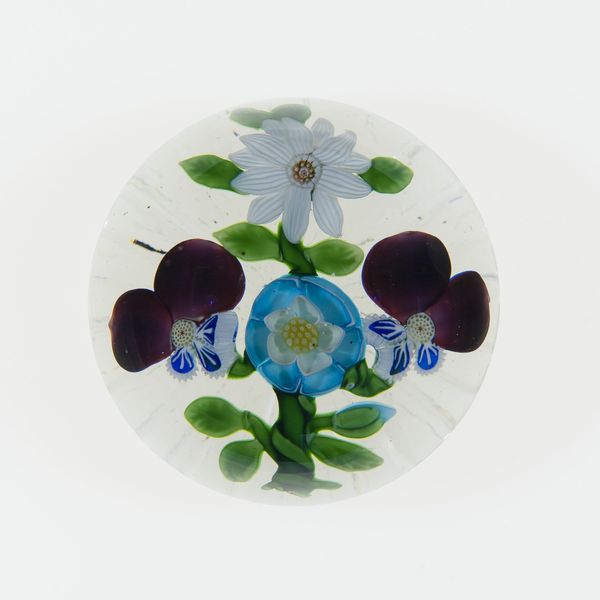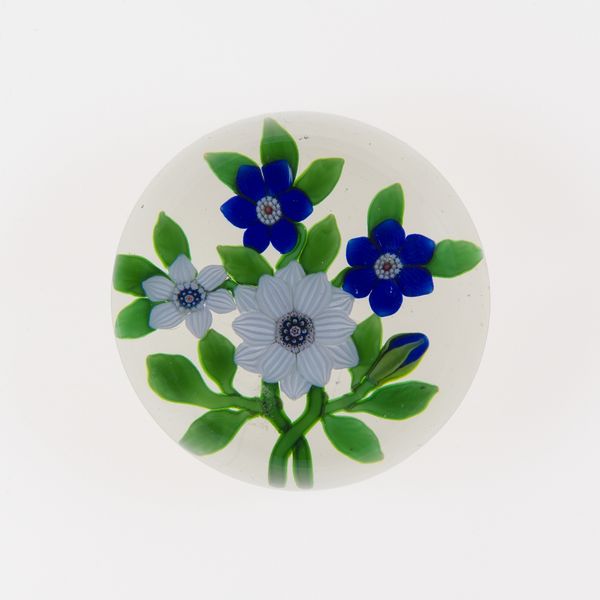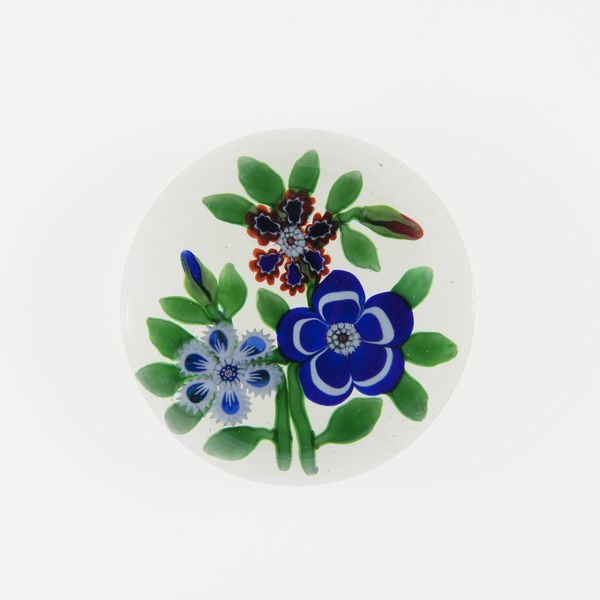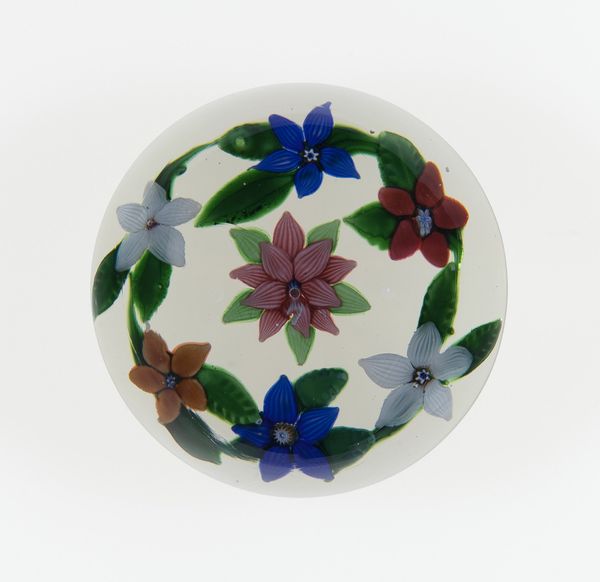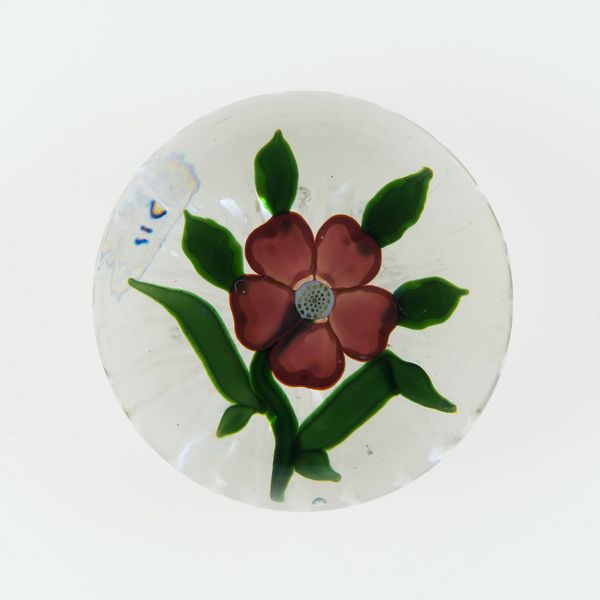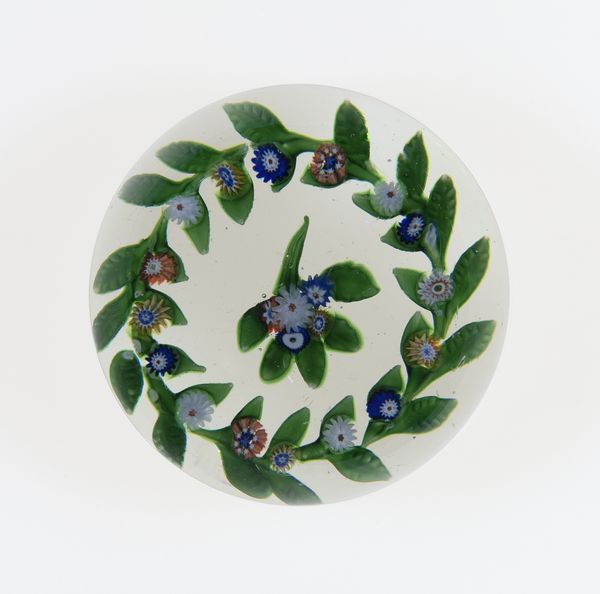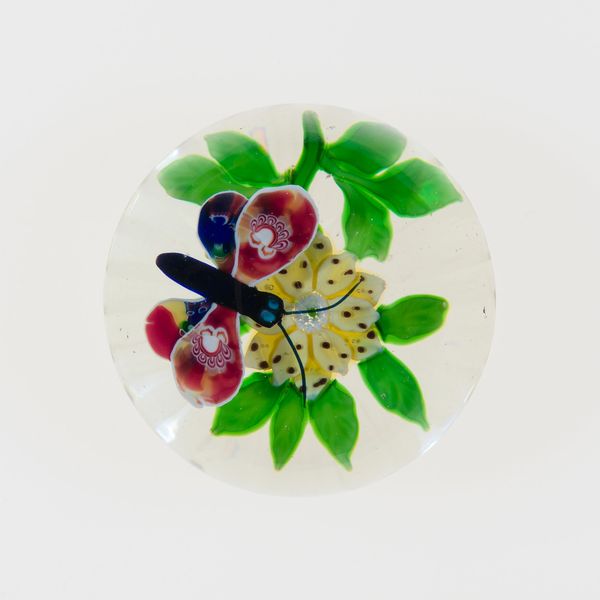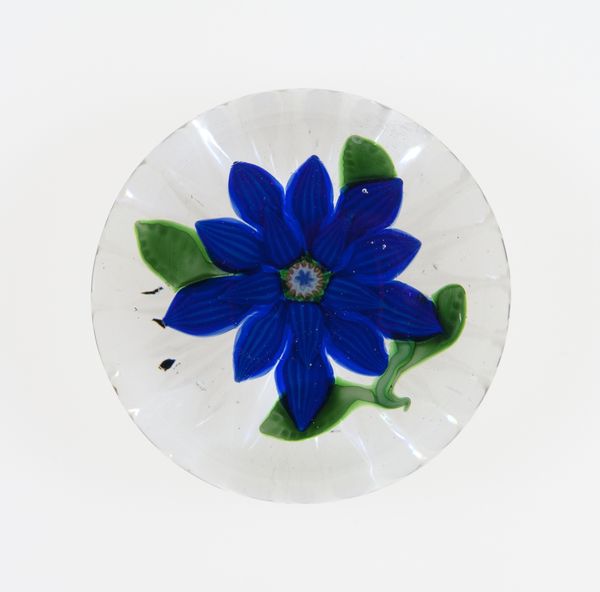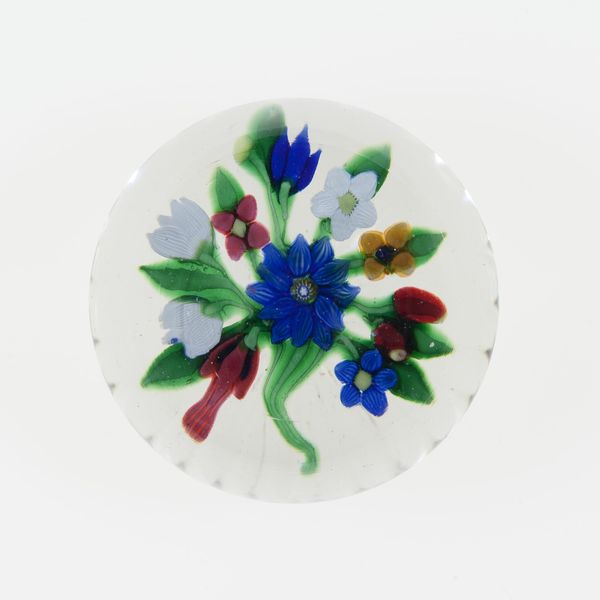
glass
#
glass
Dimensions: Diam. 9 cm (3 9/16 in.)
Copyright: Public Domain
Curator: This lovely object before us, currently residing at The Art Institute of Chicago, is a glass paperweight created by Baccarat Glassworks, circa 1845 to 1860. Editor: It's stunning. The floral design, captured in glass, is like a tiny, self-contained garden. The transparency is especially appealing, juxtaposed to the opaque floral ornamentation. Curator: The artistry truly lies in its making. They used millefiori—or "thousand flowers"—a technique where glass canes with intricate patterns are bundled, heated, stretched, then sliced to reveal miniature designs. Editor: That really draws me to consider it on a deeper level, since its artistry clearly speaks to not only to labor practices and skill, but perhaps also class. The delicacy is also rather appealing, like a fleeting moment permanently held in glass. It also suggests Victorian attitudes toward controlling and categorizing the natural world, an impulse towards scientific cataloging as much as aesthetics. Curator: Exactly! This type of decorative art reflects a time of significant social change and increased production due to industrialization, yet a concurrent desire to display individual craftsmanship. Paperweights gained popularity during that period, a beautiful intersection of functional object and status symbol. Editor: Thinking of it as a status symbol does open new doors to interpretation. The act of possessing such an intricate piece also symbolizes controlling something of seemingly unattainable beauty, and its accessibility limited by capital and privilege. There's definitely some connection to power dynamics inherent in displaying wealth, which this object epitomizes through something otherwise mundane: something designed to simply hold papers. Curator: Yes, its functionality adds an interesting dimension, because what could be more quotidian than holding papers down? Yet, encased within is remarkable skill. We might want to ask: what kind of "labor" are we appreciating through this object, or who exactly benefitted through its exchange? Editor: That certainly compels us to question our own relationships with mass manufactured goods and consumerism today. And I think, as you highlight, the act of critical viewing of any artwork must, at times, delve into those uncomfortable histories and contemporary associations. Curator: Absolutely. Hopefully, the simple act of examining an artifact reveals the complexities inherent to design history, consumerism, gender dynamics, and even current material culture. Editor: I concur, considering design or otherwise 'everyday' objects seriously really shows that social theory is as revealing as social history.
Comments
No comments
Be the first to comment and join the conversation on the ultimate creative platform.
